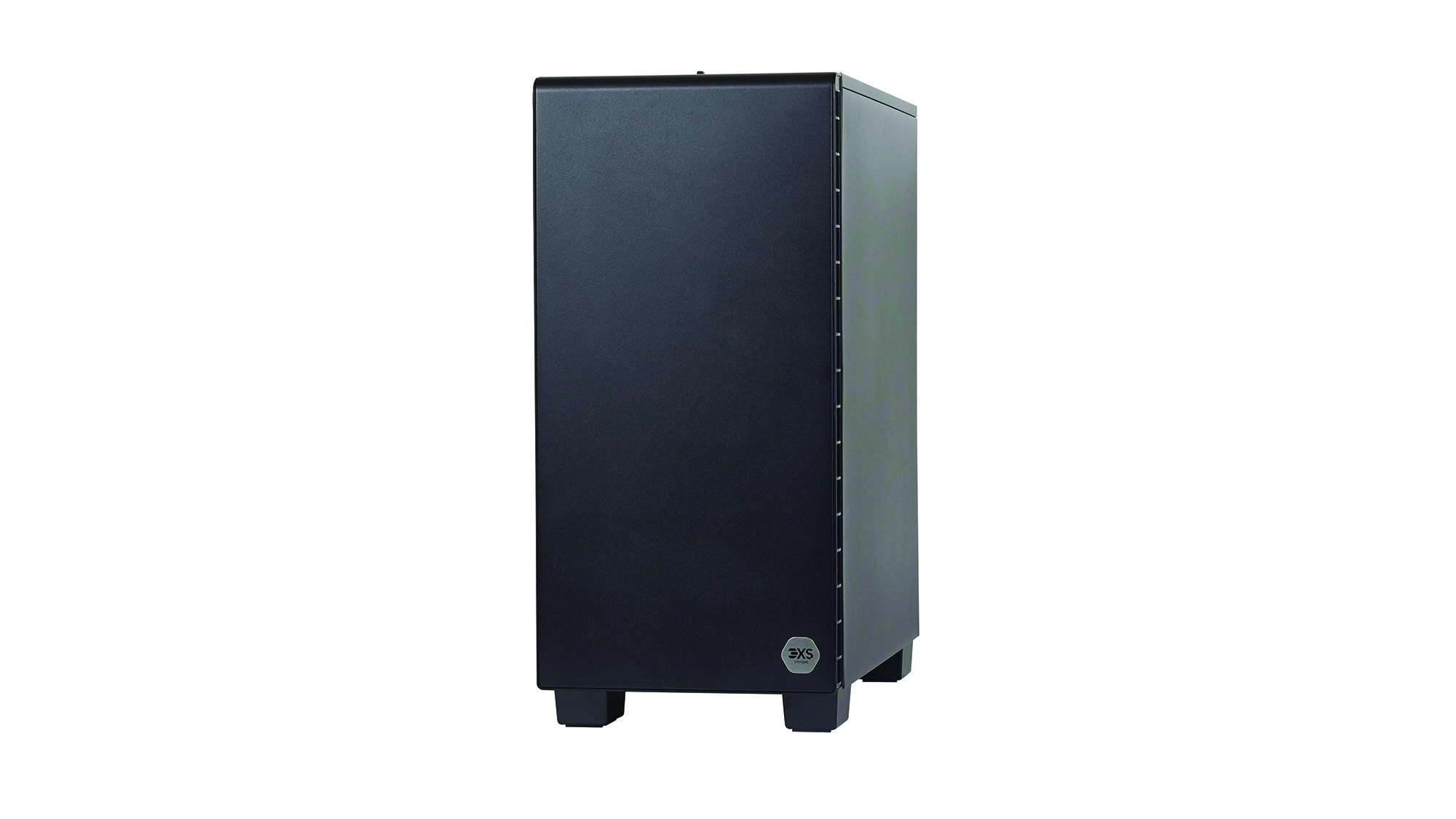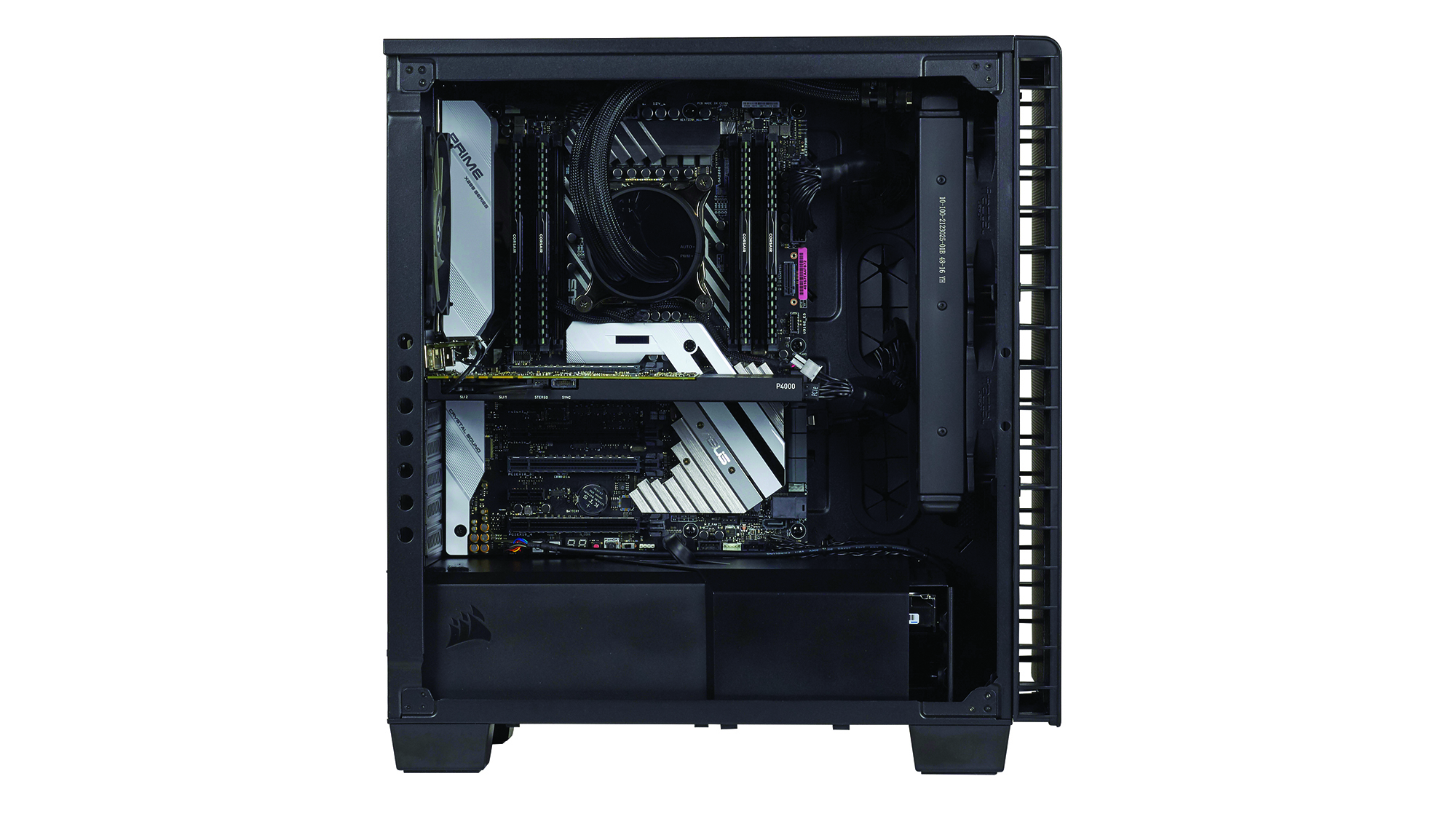Scan 3XS WI6000 Viz review
The 18-core Intel Core i9 processor and keen price power the WI6000 Viz to glory


The Scan 3XS WI6000 Viz is an unadulterated beast of a workstation that can eat virtually any other system for breakfast when it comes to CPU-intensive tasks. It's also terrific value, given that more than a third of this system’s ticket price is made up of the CPU’s cost.
-
+
Core i9 CPU delivers some of the fastest performance scores we've ever seen; Great value
-
-
Not as fast for single-core and GPU-based workloads as higher-clocked systems

This system is a monster. Based around Intel's top Core i9 processor, the 7980XE, the Scan WI6000 Viz sports not two, not four, not eight, but a jaw-dropping 18 CPU cores with Hyper-Threading upping the number of available virtual cores to 36. This propels the workstation to some of the fastest performance scores we've ever seen, but it's not the most expensive. In fact, in terms of price, this is one of the cheaper systems in the sub-6,000 category.
The 7980E processor runs at a nominal 2.6GHz, but Scan has set the clock permanently to 4.2GHz, with Fractal Design Celsius S24 watercooling keeping the extra thermal output produced by the overclock at bay. Four 16GB modules of 3,000MHz DDR4 RAM are also included, for a total of 64GB, with an additional four unused DIMM slots for future expansion.
Armari Magnetar S16T-RW1000G2 review PC Specialist Apollo X02 review InterPro IPW-CL review
Since Scan is aiming the WI6000 primarily at rendering and other processor-intensive activities, the company had opted to forego Nvidia's higher-end Quadro P5000 GPU in favour of its more cost-effective sibling, the P4000, which is almost half the price. This card isn't exactly weedy, however - it's got 8GB of GDDR5 memory and 1,792 CUDA cores, so it's still going to handle 3D modelling and design tasks very capably indeed.
Scan has kept the storage provision relatively sober, considering the high-end processor. It offers the usual combination of SSD and hard disk, and these are essentially the same as its lower-end VI4000 system. There's a 500GB Samsung 960 Evo NVMe SSD connected via M.2, and a 2TB Seagate Barracuda HDD connected via SATA. The former provides decent 2.6GB/sec reading and 2GB/sec writing, whilst the latter is merely a reasonable performer, with 186MB/sec reading and 191MB/sec writing.

The 18-core processor meant the VI6000 achieved an amazing score in our benchmarks, with 524. Naturally, this system blazed through all CPU-based 3D rendering tasks, with 3,867 in Maxon Cinebench 15. It took just 1,094 seconds to complete the Blender render. The Quadro P4000 doesn't have enough memory to complete this render in GPU, but 3,133 in the LuxMark 3.1 OpenCL GPU shows that the graphics chip has plenty of power available. Note that the Skylake-X processors aren't currently supported by Intel's OpenCL drivers in LuxMark 3.1.
The WI6000 was equally impressive at video encoding with Adobe Media Encoder and GPU assistance, and even faster without. Although Scan hasn't gone entirely for gold with 3D modelling, the P4000 is still a solid performer in this area. It managed a top-notch result with Maxon Cinebench 15 OpenGL, but with SPECviewperf 12.1, its results didn't outpace the competition quite so much, thanks to the lower CPU clock speed compared to many competitors.
As a result, the 3dx Max result of 131 wasn't as show-stopping as other we've seen from other systems, and neither was the 153 in Catia. The SolidWorks score of 168 is good, but behind other systems using P4000 graphics thanks to their higher CPU clock speeds. Similarly, the Creo score of 117 was middling compared to some rivals, as was 156 in Siemens NX. In Maya, 102 places the WI6000 in a fairly lacklustre position. So this is merely a workmanlike system for modelling; its true strengths are in multithreaded tasks such 3D rendering and video encoding, where it reigns supreme.
Sign up today and you will receive a free copy of our Future Focus 2025 report - the leading guidance on AI, cybersecurity and other IT challenges as per 700+ senior executives
The Scan 3XS WI6000 Viz shows how healthy the current competition between AMD and Intel is in the workstation processor market. Intel has had to respond firmly and quickly, and Scan showcases the end result -- an unadulterated beast of a workstation that can eat virtually any other system for breakfast when it comes to CPU-intensive tasks. The WI6000 is also terrific value, given that more than a third of this system's ticket price is made up of the CPU's cost. Add in the fact that it cuts no corners in other areas and comes with Scan's usual three-year warranty, and this system is a downright bargain.
Verdict
The Scan 3XS WI6000 Viz is an unadulterated beast of a workstation that can eat virtually any other system for breakfast when it comes to CPU-intensive tasks. It's also terrific value, given that more than a third of this system’s ticket price is made up of the CPU’s cost.
| Processor | 2.6GHz Intel Core i9-7980X overclocked to 4.2GHz |
| Motherboard (make and model) | Asus Prime X299-Deluxe |
| Expansion slots free/total | 8 x RAM slots (4 free), 4 x PCI-E x16 (3 free), 2 x PCI-E 1x (2 free), M.2 socket (0 free), U.2 socket (1 free), 8 x SATA 600 (7 free) |
| RAM fitted/speed | 64GB DDR4 3,000MHz |
| Graphics | Row 4 - Cell 1 |
| Make and model | PNY Quadro P4000 |
| RAM amount | 8GB GDDR5 |
| Outputs | 4 x DisplayPort 1.4, stereo (via adapter) |
| SSD make and model | Samsung 960 Pro |
| Nominal capacity | 500GB |
| Interface | NVMe M.2 PCI Express |
| Hard disk make and model | Seagate Barracuda 7200.14 |
| Nominal capacity | 2TB |
| Spindle speed | 7,200rpm |
| Memory buffer | 64MB |
| PSU make and model (power output) | Corsair RMX850 80PLUS Gold (850W) |
| CPU cooler | Fractal Design Celsius S24 water cooler |
| Rear ports | 2 x Gigabit Ethernet, 4 x 3.5mm audio jack, 3.5mm microphone jack, optical S/PDIF, 4 x USB 3.1 Gen 1, 3 x USB 3.1 Gen 2 (Type A), USB 3.1 Gen 2 (Type C), 4 x USB 2 |
| Front/top ports | 2 x USB 3, 3.5mm audio jack, 3.5mm microphone jack |
Dr James Morris has worked as a technology journalist for over 25 years, including spending nine years on the staff of market-leading computer magazine PC Pro, the last five of which were as the publication’s editor. He specialises in enterprise-grade software and hardware, with a particular focus on content creation. He launched a pioneering video channel for HEXUS.net in 2006 and ran the video reviews channel for TrustedReviews.com for four years. He also runs a successful online digital content and commercial video production company, t-zero communications Ltd.
Dr Morris is a prolific technology writer and contributes commercial content for major IT brands including AMD, BlackBerry, Dell, Cognizant, HP, and IBM. He published a book on artificial intelligence, Can Computers Create Art? in 2009. He is also an academic, and is currently Pathway Director of the MA, Interactive Journalism at City, University of London.
Previously, he was course leader for the BA in Web Media Production at Ravensbourne University. He has a PhD in Philosophy, Art and Social Thought from the European Graduate School in Switzerland, a Master's in Media Arts from the New School in New York, USA, and a Bachelor's in Social Anthropology from the London School of Economics.
Dr. Morris can be found on Twitter at @Cyberwest, or emailed at j@tzero.co.uk
-
 OpenAI turns to red teamers to prevent malicious ChatGPT use as company warns future models could pose 'high' security risk
OpenAI turns to red teamers to prevent malicious ChatGPT use as company warns future models could pose 'high' security riskNews The ChatGPT maker wants to keep defenders ahead of attackers when it comes to AI security tools
By Nicole Kobie Published
-
 Oracle's huge AI spending has some investors worried
Oracle's huge AI spending has some investors worriedNews Oracle says in quarterly results call that it will spend $15bn more than expected next quarter
By Nicole Kobie Published
-
 A concerning number of Log4j downloads are still vulnerable four years on
A concerning number of Log4j downloads are still vulnerable four years onNews Despite safe Log4j versions having been available for years, many organizations haven't introduced them
By Emma Woollacott Published
